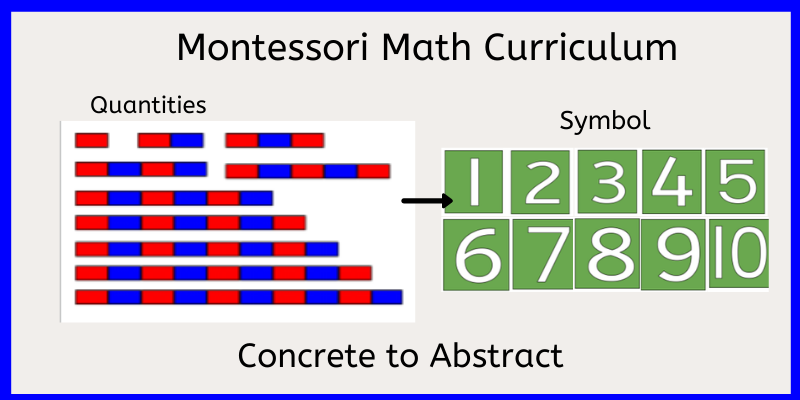Table of Contents
There are few Montessori concepts that we should be aware of when teaching preschool math. The most important out of these is the “order of sequence”. This will help the child grasp abstract mathematical concepts with ease. There are 5 basic Montessori math materials to learn numbers 1-10.

Basic Montessori Mathematical Concepts
- Present Concrete materials first and then introduce abstract concepts
- Teach quantities before the symbols
- Use attached quantities before introducing loose quantities
- Always teach in order of sequence, 1, 2, 3…Never teach random numbers
Basic Montessori Math Materials
Sandpaper Numbers
Find out how to DIY them on a Budget!
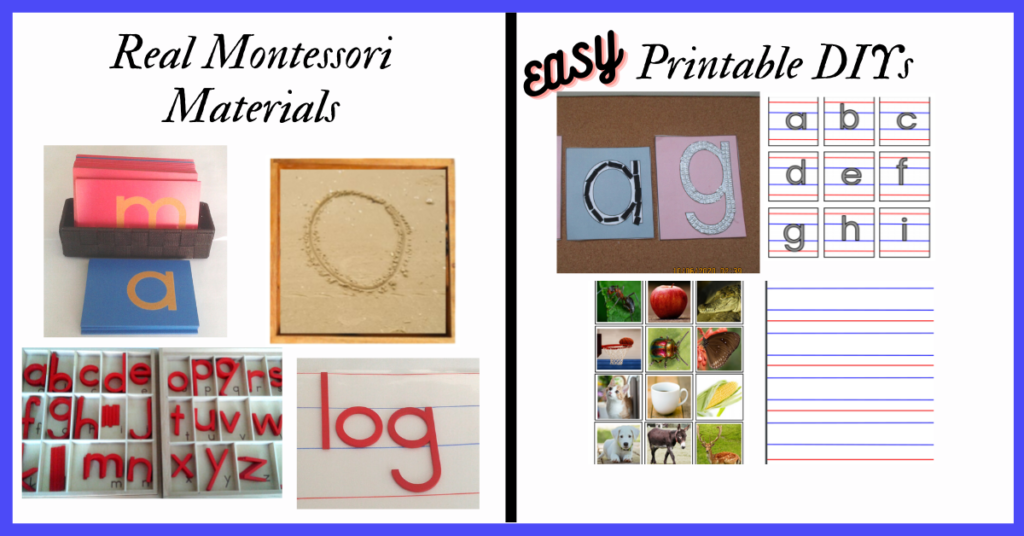
The first Montessori Math material is Number Rods, a set of wooden rods increasing in length. The child learns the quantities 1-10 before he learns the symbols. The quantities of the Number rods are attached together and make it easier for the child to handle. The rest of the activities have loose quantities. And they all increase in difficulty.
Montessori Math Curriculum – Numbers 1-10
- Quantities with the Number Rods
- Symbols with Sandpaper Numbers
- Attached quantities and loose numbers with Number Rods and Cards
- Loose quantities and attached symbols with Spindle Boxes
- Loose quantities and Loose symbols with Number card and Counters
- Loose quantities with the Coloured Beads/The Short Bead Stair
Quantities with Number Rods
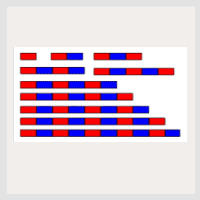
Number Rods is the first Montessori math material. The child does not need to know the number symbol to do this activity. Preschool numeracy begins with counting. Knowing the quantity makes it easy for the child to learn the symbols. This is a set of 10 rods, increasing in length, according to the quantity. Number Rods are a good way of learning quantities 1-10. The attached quantities help the child to engage in counting without making an error. The alternating red and blue colours make it easy for the child to count with ease. When presenting, take one rod at a time and start counting the red and blue sections. Give the child a turn each time. Start with only a few rods at a time and continue until you reach 10. Let the child practice daily.
Symbols with Sandpaper Numbers
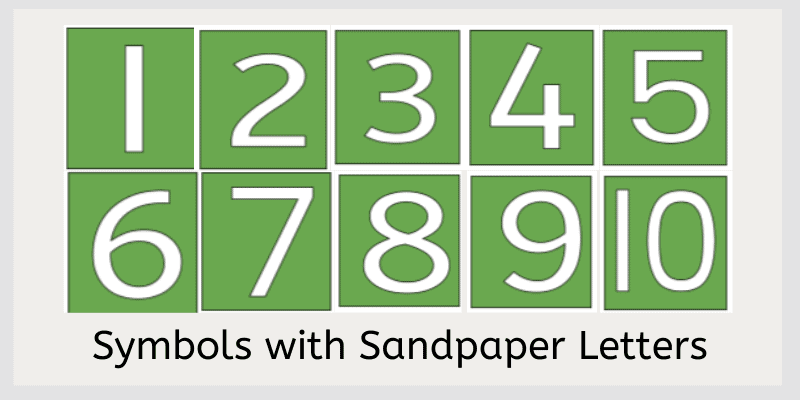
Once the child is familiar with quantities, start introducing the corresponding symbols. In the Montessori method, we use the Sandpaper Numbers. Three Period Lesson is the Montessori way to teach any new word. Take 3 Sandpaper Letters at a time and apply the three Period Lesson to teach each number.
The Three-Period Lesson: 3 easy Steps
Three Period Lesson is a very effective Montessori Strategy to teach new words. This a technique that the Montessori method uses new words. We can apply this to teach symbols using Sandpaper Numbers. When introducing numbers it is important to follow the order of sequence. So choose Numbers 1-3 and keep adding new numbers until you cover all 10
- Naming
- Recognition
- Remembering
Naming
Turn the three chosen Sandpapers Numbers upside down. Pick the one you want to teach first while the rest of the two are still facing down. Trace (with two fingers: index+middle) and name the Symbol. Give the child a turn each time. Repeat for all three Numbers. (Make sure all the other numbers are facing down when you present one.)
Recognition
Turn all three over and display in front of the child. The child should be able to see all three numbers at the same time. Then ask the child, “show me 2”, “show me 3”…etc., or “point to 1”, “point to 3”…etc. Do not ask, “what is this number?” Make sure your sentence includes the name of the number. At this stage, it is too early for the child to remember them by themselves. Repeat many times and give the child ample time to remember the numbers.
Remembering
This stage is like a testing stage. Turn all three numbers upside down like the first stage. Take one number at a time and ask, “what number is this?” If the child can tell, then move on to the next number. If you feel like the child needs more practice, you can always go a step back and practice the previous stage.
Attached Quantities and Loose Symbols- Number Rods and Cards
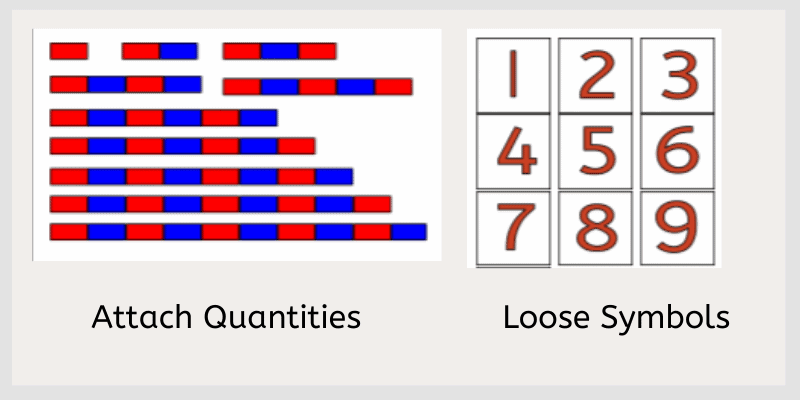
When the child is familiar with both quantities and symbols, bring them together. Now we can replace Sandpaper letters with Number Cards. Number Cards are a wooden set of cards labeled with numbers 1-10. Show the child how to count the Rods and match them with the Number Cards.
Loose Quantities and Attached Symbols- Spindle Boxes
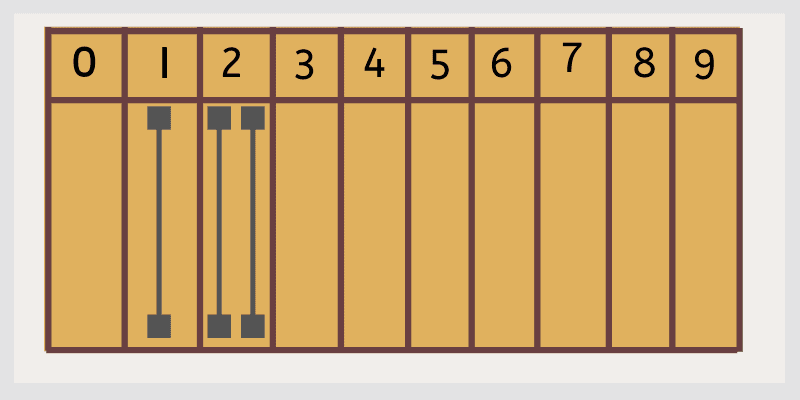
Spindle Boxes have 45 wooden spindles and a box of 10 slots with 0-9 written on them. Show the child how to count and put the spindles in the correct slot. The child should know all the numbers(1-10) by now. So take all 10 numbers at once.
The child will know when he/she made a mistake when there will be a shortage or excess number of spindles left.
Be sure to give the child enough time to get into the rhythm of counting loose quantities. It is very common for the child to count faster and pick up the spindle slower. Or vice versa. Encourage the child to be slow. Practice makes it perfect. So be patient and give the child time.
Loose Symbols and Loose Quantities – Cards and Counters
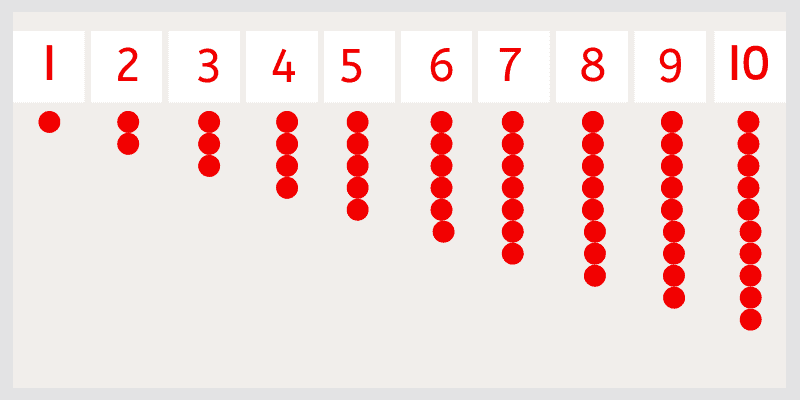
By this time the child should have a good handle on counting loose quantities. He should also be quite familiar with the symbols. Cards and counters have 10 wooden cards labeled 1-10 and 55 counters.
Show the child how to lay the cards in order of 1-10
Then Show how to read the symbol, count counters, and place them under the symbol. Do up to 3 numbers and let the child take over.
The same rule applies for this activity as well. The child might count and pick up counters at different speeds. Try to bring the child’s attention to the speed of counting and picking up counters. And remember practice makes it perfect. So be patient and give the child time.
Quantities with the Short Bead Stair
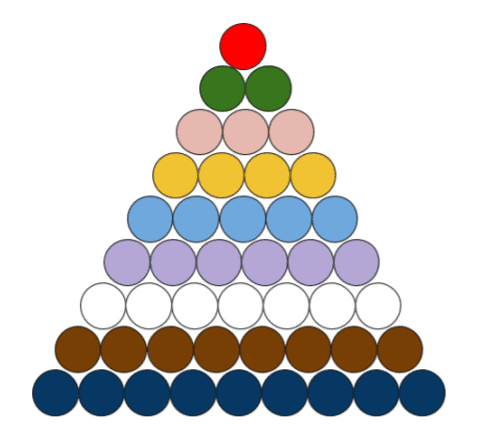
This is also called Coloured Beads and they are a great way to further practice numbers 1-10. In the Montessori method, these beads are used for many advanced mathematical operations.
Each number has a specific colour. Show the child how to count the beads. Do about three numbers and let the child take over. Show how to make the stair (triangular shape) starting from 1-9. Do lots and lots of colouring sheets, until the child can memorize the colour.
Conclusion
Teaching math in preschool should be methodical. Introduce the quantity first to make it easy for the child to grasp the concepts. Quantities are concrete and children can feel, touch, and count them. By the time the child learns the symbols, he/she knows the value of it. Symbols are abstract and are difficult for the child to comprehend without any meaning to it. Last but not least, follow the order of sequence. Don’t teach randomly picked numbers.

